
The Game Boy Advance is a 32-bit handheld video game console developed, manufactured and marketed by Nintendo as the successor to the Game Boy Color. It was released in Japan on March 21, 2001, in North America on June 11, 2001, in Australia and Europe on June 22, 2001, and in mainland China on June 8, 2004 as iQue Game Boy Advance. The GBA was part of the sixth generation. The original model did not have an illuminated screen; Nintendo addressed that with the release of a redesigned model with a frontlit screen, the Game Boy Advance SP, in 2003. A newer revision of the aforementioned redesign was released in 2005, which included a backlit screen. The final redesign, the Game Boy Micro, was released in 2005.

Pokémon Ruby Version and Pokémon Sapphire Version are role-playing video games developed by Game Freak, published by The Pokémon Company and Nintendo for the Game Boy Advance. They are the first installments in the third generation of the Pokémon video game series, also known as the "advanced generation". After years of Nintendo being the sole publisher of the franchise in all regions, The Pokémon Company began co-publishing the games for the first time since the establishment of the joint-owned company in 1998. They were first released in Japan in late 2002 and internationally in 2003. Pokémon Emerald, an enhanced version, was released two years later in each region. Remakes of the two games, titled Pokémon Omega Ruby and Alpha Sapphire, were released for the Nintendo 3DS worldwide on November 21, 2014, exactly twelve years to the date of the original Ruby and Sapphire release date, with the exception of Europe, where it released on November 28, 2014.
Motoi Sakuraba is a Japanese music composer, arranger, and keyboardist known for his numerous musical contributions in video games, anime series, television dramas, and progressive rock solo works. Some of his notable works include the Tales, Star Ocean, Mario Golf, Mario Tennis, Golden Sun, and Dark Souls series.

Mario Golf: Toadstool Tour, known in Japan as Mario Golf: Family Tour, is a 2003 sports game developed by Camelot Software Planning and published by Nintendo for the Nintendo GameCube. It is the sequel to the 1999 Nintendo 64 title Mario Golf, and is the second game in the Mario Golf series. It was released in North America on July 28, 2003, in Japan on September 5, 2003, and in the PAL region in 2004.

The Game Boy Player (DOL-017) is a device made by Nintendo for the Nintendo GameCube which enables Game Boy, Game Boy Color, or Game Boy Advance cartridges to be played on a television. It was the last Game Boy-based add-on to a Nintendo console. It connects via the high speed parallel port at the bottom of the GameCube and requires use of a boot disc to access the hardware. Unlike devices such as Datel's Advance Game Port, the Game Boy Player does not use software emulation, but instead uses physical hardware nearly identical to that of a Game Boy Advance. The device does not use the enhanced effects used by the previous Game Boy accessory, the Super Game Boy, which was released for the Super Nintendo Entertainment System in 1994.

Magikarp is a Pokémon species in Nintendo and Game Freak's Pokémon franchise. Created by Ken Sugimori, Magikarp first appeared in the video games Pokémon Red and Blue and subsequent sequels. They have later appeared in various merchandise, spinoff titles and animated and printed adaptations of the franchise. Known as the Fish Pokémon, Magikarp is found in many bodies of water, especially lakes, rivers, and ponds. Magikarp is also known from the popular and modern game called PokémonGo, where it’s feautured as a starter Pokémon.
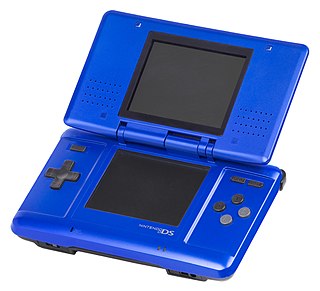
The Nintendo DS, or simply DS, is a dual-screen handheld game console developed and released by Nintendo. The device released globally across 2004 and 2005. The DS, an acronym for "Developers' System" or "Dual Screen", introduced distinctive new features to handheld gaming: two LCD screens working in tandem, a built-in microphone, and support for wireless connectivity. Both screens are encompassed within a clamshell design similar to the Game Boy Advance SP. The Nintendo DS also features the ability for multiple DS consoles to directly interact with each other over Wi-Fi within a short range without the need to connect to an existing wireless network. Alternatively, they could interact online using the now-defunct Nintendo Wi-Fi Connection service. Its main competitor was Sony's PlayStation Portable during the seventh generation of video game consoles.
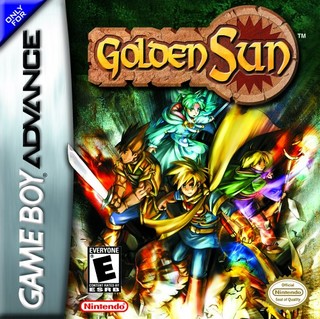
Golden Sun is a 2001 Japanese role-playing video game developed by Camelot Software Planning and published by Nintendo. It was released in August 2001 for Nintendo's Game Boy Advance, and became the first installment in the Golden Sun series. The game is notable for certain distinctive game elements, such as the use of special Djinn that empower the player and can be used against enemies.

Sonic Advance is a 2001 side-scrolling platform game developed by Dimps for the Game Boy Advance (GBA). It was the first Sonic the Hedgehog game to be released on a Nintendo platform and was produced in commemoration of the series' tenth anniversary. The story follows Sonic, Tails, Knuckles, and Amy as they journey to stop Doctor Eggman from taking over the world. Controlling a character, players are tasked with completing each level, defeating Eggman and his robot army, and collecting the seven Chaos Emeralds.

Golden Sun: The Lost Age, released under different names in some regions, is a 2002 role-playing video game for the Game Boy Advance, developed by Camelot Software Planning and published by Nintendo. It is the second installment in the Golden Sun series. It was released on June 28, 2002 in Japan, and through 2003 in North America and Europe.
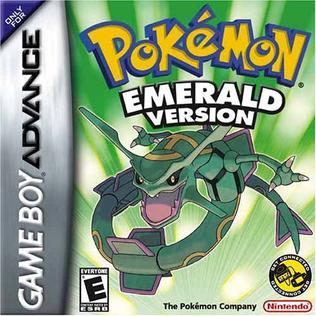
Pokémon Emerald Version is a role-playing video game developed by Game Freak, published by The Pokémon Company and Nintendo for the Game Boy Advance. It was first released in Japan in 2004, and was later released internationally in 2005. It is an enhanced version of Pokémon Ruby and Sapphire and is part of the third generation of the Pokémon video game series.

Pokémon Diamond Version and Pokémon Pearl Version are role-playing video games developed by Game Freak, published by The Pokémon Company and Nintendo for the Nintendo DS. They are the first installments in the fourth generation of the Pokémon video game series. They were first released in Japan on September 28, 2006 and later released in North America, Australia, and Europe over the course of 2007. Pokémon Platinum, an updated version, was released two years later in each region.

Camelot Co. Ltd. is a Japanese video game developer established in 1990 under the name Sega CD4, but quickly renamed to Sonic! Software Planning. Named after Sonic the Hedgehog, they were closely involved with Sega and responsible for initial development of the Shining series. In 1995, there was a brief period where they worked for Sony Computer Entertainment in addition to creating Shining products.

Castlevania: Dawn of Sorrow is an action-adventure game developed and published by Konami. It is part of Konami's Castlevania video game series and the first Castlevania game released on the Nintendo DS. The game is the sequel to Castlevania: Aria of Sorrow and incorporates many elements from its predecessor. Dawn of Sorrow was commercially successful. It sold more than 15,000 units in its first week in Japan and 164,000 units in the United States during the three months after its initial release.

Pokémon is a series of video games developed by Game Freak and published by Nintendo and The Pokémon Company as part of the Pokémon media franchise. Created by Satoshi Tajiri with assistance from Ken Sugimori, the first games released in 1996 in Japan for the Game Boy, and the main series of role-playing video games (RPGs), also referred as the "core series" by their developers, have continued on each generation of Nintendo's handhelds.

Soma Cruz, known in Japan as Sōma Kurusu, is a fictional character and the protagonist of Konami's action-adventure games Castlevania: Aria of Sorrow and Castlevania: Dawn of Sorrow, part of Konami's Castlevania video game series. He was designed by Ayami Kojima as part of producer Koji Igarashi's desire to try a "different route" for the Castlevania series. His return in Dawn of Sorrow was due to Igarashi's satisfaction with Soma and the storyline in Aria of Sorrow, and he was redesigned with a new anime appearance.

Mario Golf: Advance Tour is a role-playing video game-styled sports game developed by Camelot Software Planning and published by Nintendo for the Game Boy Advance in 2004. The game is the sequel to the Game Boy Color version of Mario Golf and the Game Boy Advance counterpart of Mario Golf: Toadstool Tour.
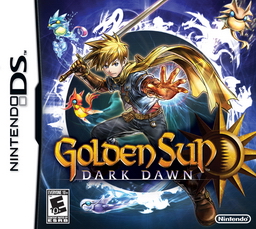
Golden Sun: Dark Dawn is the third installment in a series of fantasy role-playing video games developed by Camelot Software Planning for Nintendo. Speculation of a third entry in the franchise began soon after the release of its predecessor, Golden Sun: The Lost Age, in 2002, culminating in a widely-spread hoax game being revealed at a pre-E3 2007 gathering. The game was first announced as "Golden Sun DS" at E3 2009, while the name and release window was subsequently revealed in Nintendo's E3 2010 presentation. Released in late 2010 for the Nintendo DS hand-held console, Dark Dawn was the fifth-best selling game during its release window in Japan.
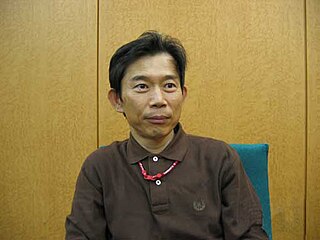
Hiroyuki Takahashi, is the president of video game developing company Camelot Software Planning. He has directly participated in most of the projects of the company, particularly as a writer, art director, producer and game designer.

Mario Sports Superstars is a sports video game developed by Bandai Namco Studios and Camelot Software Planning and published by Nintendo for the Nintendo 3DS handheld video game console. The game contains five sports minigames, football, baseball, tennis, golf, and horse racing, and was released worldwide in March 2017.





















